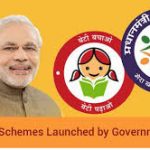ALWAYS – INVEST IN WHAT YOU KNOW & WHAT YOU CAN UNDERSTAND. DEVELOP CURIOSITY AS A TRAIT
Textiles Industry Analysis
Must know facts:
- Textile plays a major role in the Indian economy (i) It contributes 14 per cent to industrial production and 4 per cent to GDP (ii) With over 45 million people, the industry is one of the largest source of employment generation in the country.
- Production of raw cotton in India grew from 28 million bales in FY07 and further increased to 35.1 million bales in FY17.
- The textile industry has two broad segments – 1> unorganised sector consists of handloom, handicrafts and sericulture , which are operated on a small scale and through traditional tools and methods 2> organised sector consisting of spinning, apparel and garments segment which apply modern machinery and techniques such as economies of scale.
Influencing Factors for price change:
- One primary thing you should understand is – your chosen stock falls under which category in textile business lifecycle. They are stocks relating to Textile – Readymade apparels, Textile – Machinery, Textile – Spinning, Weaving & a few more variety.
- So if your investment is into textile machinery you should pay close attention to import trends & origin country of imports. If you are invested in readymade apparel segment stocks, you should concerned about news on changing trends, domestic consumption patterns based on life style of people & many more trends.
- Watchout for export promotion policies for the textiles sector which could benefit weavers & artisans. Government has also allowed 100 per cent FDI in the Indian textiles sector under the automatic route.
Understanding the Industry:
The Textile Sector in India ranks next to Agriculture. India is the largest cotton and jute producer in the world, it has 5% share in global textiles and apparel trade. India’s textiles sector is one of the oldest industries in Indian economy dating back several centuries. Even today, textiles sector is one of the largest contributors to India’s exports with approximately 13 per cent of total exports. The textiles industry is also labour intensive and is one of the largest employers. The textile industry has two broad segments. First, the unorganised sector consists of handloom, handicrafts and sericulture, which are operated on a small scale and through traditional tools and methods. The second is the organised sector consisting of spinning, apparel and garments segment which apply modern machinery and techniques such as economies of scale.
Abundant availability of raw materials such as cotton, wool, silk, jute and manmade fibres combined with comparative advantage in terms of skilled manpower and cost of production over major textile producers across globe makes India an important textile destination in the world.
Presence of entire value chain for textile production beginning from production of natural fibre to the production of yarn, fabric and apparel within the country giving edge over countries like Vietnam, Bangladesh etc. Presence of traditional skill sectors i.e. hand loom and handicraft is certainly a money spinner of sorts in export based markets.
Estimated Market Size:
The Indian textiles industry, currently estimated at around US$ 120 billion, is expected to reach US$ 230 billion by 2020. The Indian Textile Industry contributes approximately 2 per cent to India’s Gross Domestic Product (GDP), 10 per cent of manufacturing production and 14 per cent to overall Index of Industrial Production (IIP).
Indian khadi products sales increased by 33 per cent year-on-year to Rs 2,005 crore (US$ 311.31 million) in 2016-17 and is expected to exceed Rs 5,000 crore (US$ 776.33 million) sales target for 2018-19, as per the Khadi and Village Industries Commission (KVIC).
Indian exports of locally made retail and lifestyle products grew at a compound annual growth rate (CAGR) of 10 per cent from 2013 to 2016, mainly led by bedding bath and home decor products and textiles, as reported by global logistics firm Damco.
Road Ahead:
Road ahead looks good with rising per capita income, higher disposable incomes, favorable demographics and shift in preference for branded products. Favorable government policies and incentives for manufacturers, changing lifestyles and increasing demand for quality products are set to fuel the need for apparel.
At the same time, there are quite a few challenges that are noted post introduction of GST. The effective GST duty on fabric is 5% officially, but because of the non-refund of excess input tax credit under inverted duty structure, it actually adds up to 8-9%.This is making us lose to imports because they only pay 5% IGST.
Export incentives have come down and at the same time import barriers have gone down, which has resulted in imports going up by 20% already, and in some cases like in Bangladesh garments have increased by 50%. Exports are coming down every month.
Top Stocks in the industry:
Textile readymade garments stocks – Page Industries, KPR Mill, Monte Carlo & many more.
Textile Machinery stocks – Lakshmi Machine, Stovec Ind & many more.
Textile General Processing – Jindal Worldwid, Bombay Rayon, Garware Wallropes & many more.
(Please note above stocks are not recommendations, they are purely for information purpose only)
Information Source / References: IBEF, MakeinIndia, articles published on Economic times, The Economic Survey 2016–17 & 17/18, Agricultural and Processed Food Products Export Development Authority (APEDA), Department of Commerce and Industry, Union Budget 2017–18, Press Information Bureau, Ministry of Statistics and Programme Implementation, Press Releases, Media Reports,
More Research Articles:
Agriculture Related Industry Analysis, Automobile Industry Analysis, IT Industry Analysis, Banking Industry Analysis, Courier-Logistics Industry Analysis, Education Industry Analysis, Manufacturing Industry Analysis, RealEstate Industry Analysis, Healthcare & Hospitals Industry Analysis, Telecommunications Industry Analysis .. Choose from Menu for Research on 30+ industry sectors
Knowledge Seekers Paradise: PDF DOWNLOAD’s of HANDBOOKs released by Government of India:
Government Schemes Announced – Budget 2018-19



